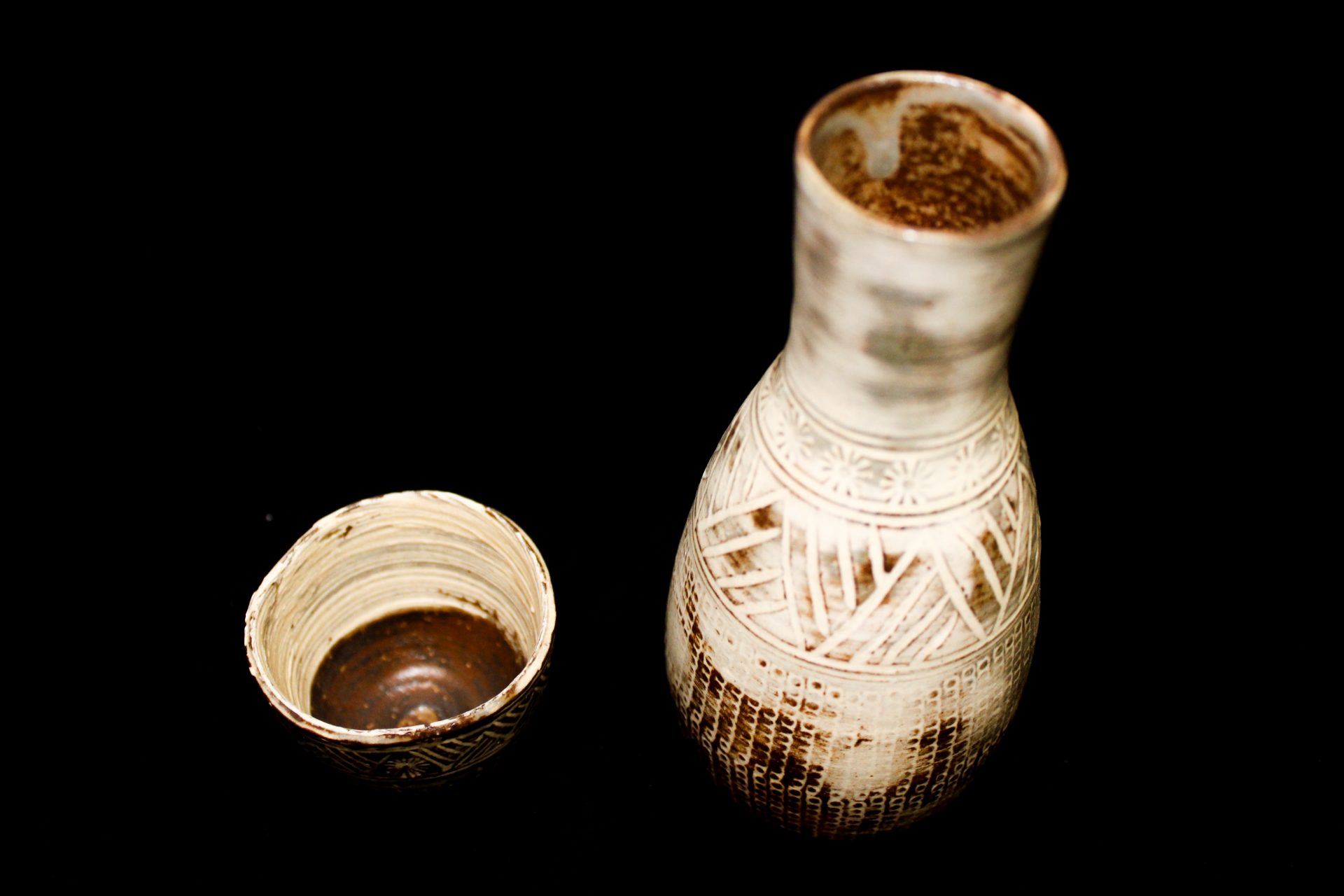The burning of incense came into Japan in the sixth century from China through Buddhism. Used for spiritual and ceremonial purposes, incense is still used in Japanese Buddhist temples today. Japan has two main religions; Buddhism and Shinto, with many people following both. Incense has different uses amongst Japanese culture, mostly spiritual but also practical.
History of Incense

Incense has been around for centuries, believed to have been used by Egyptian Pharaohs and the Babylonians in prayer and when conferring with oracles. There is also biblical reference to incense being used, suggesting Egypt as the place of origin. It is used for religious purposes in Christianity today. Japan adopted incense into their culture through Chinese Buddhist influence, as previously mentioned. The first uses for incense were for purification of the air and in meditation. In the fourteenth century, Samurai warriors would use incense to give their helmets and armour a fragrance and were the principal people, apart from Buddhist priests, to use incense at this time. By the fifteenth and sixteenth centuries, use of incense gained popularity with the middle and upper classes, and eventually developed into an object used in many households.
Koh-Do Ceremony

Koh-Do or kodo, deriving from the Japanese koh, meaning incense, is a ceremony that can be found in historical evidence as far back as the Muromachi period (1336-1573). Kodo is often referred to as the ‘art of incense’ and is all about appreciation, a quintessential Japanese trait. So what does this ceremony involve for a participant? In description, it sounds game-like, as those involved smell scents of different wood chips with distinct fragrances and memorise the smell to later identify them. However, the art appreciation and spirituality in kodo is taken very seriously. There are ten different virtues of, including to purify the mind and body, create peace, and remove uncleanliness.
Religion in Japan

Although burning incense has its associations with Buddhism, and is not an integral part of Shinto religion, the belief that incense purifies the body and its surroundings is widely held by many, if not all, in Japan. Shinto is the traditional religion of Japan, with the worshipping of many gods, whereas Buddhism is more about spirituality and state of mind. A big difference between the two becomes apparent when entering a shrine or temple. At a temple there is an incense burner but at a shrine there is a purification fountain. Here, the visitor to the shrine washes their hands using a ladle and then rinses their mouth, spitting the water out near the fountain once done. A common mistake often made by foreigners is to drink the water, which is not advisable! It is customary when entering a temple to blow the incense smoke onto an ailing part of your body, if you have any, as incense smoke is perceived to have healing properties. When entering the offering hall, it is traditional to throw a coin in the collection box, then bow twice deeply, clap your hands twice, bow again and then pray. The clapping is to signal to the god that you are there so they will listen to your prayer.
What is Incense Made From?

There are many ingredients that make up Japanese incense, which can change depending on which part of the world you purchase it from. The shape of the incense is formed using tabu tree bark, which can be found in China. In order to preserve the fragrance of the incense, Benzoin can be used, which is a resin made from the Styracaceae tree found in areas such as Thailand or Indonesia. Sandalwood has been used in Japanese incense for centuries and originates in countries such as India, Indonesia and Australia, and helps give it its sweet fragrance. Nard, an aromatic root, and Cassia are also popular ingredients, coming from places like Vietnam or Sri Lanka. If you’ve ever been to Japan, you may also have noticed that there are an abundance of insects like mosquitoes, Camphol can be used in incense to repel these pests with its antiseptic qualities.

Types of Incense
Incense can come in three kinds; as sticks, cones or coils. Incense sticks are long, thin and burn easily; these are probably the ones you have seen before if you’ve ever visited any sort of Buddhist shine or festival and are best used with incense holders so that the ash can be caught when it falls down. Incense cones exhibit a more intense fragrance that is better suited to large spaces and burns much faster than the sticks. The coils are specifically designed to burn for a very long time, this incense can even burn for as long as two hours. The characteristics of this incense mean that an area will receive a steady and constant fragrance over a long period of time.

Atelier Japan’s Take on the Tradition
Atelier Japan features incense products spanning from incense stands and burners to containers, all impeccably crafted by our makers with unique and individual designs to encompass this rich tradition.







 Originally, this ceremony centred on plum blossoms but by the Heian era (794 – 1185) it transitioned to exclusively focus on Sakura. This blossom only blooms for a very short time (usually a week) betweenMarch and May, most commonly in very early April in Kyoto, and is seen to metaphorically represent the fleeting nature of life. Historically, the period in which the cherry-blossom bloomed was indicative of divining that year’s harvest and signalled the commencing of the rice-planting season. When the Sakura trees come to fruition and the blossoms start to fall, swirling around in the wind, this is seen as the ultimate time to host viewing parties as this sight is considered particularly beautiful to behold. Sakura blossoms and their movement are widely seen to incorporate the Japanese ideology of wabi-sabi (the aesthetic of imperfection and transience).
Originally, this ceremony centred on plum blossoms but by the Heian era (794 – 1185) it transitioned to exclusively focus on Sakura. This blossom only blooms for a very short time (usually a week) betweenMarch and May, most commonly in very early April in Kyoto, and is seen to metaphorically represent the fleeting nature of life. Historically, the period in which the cherry-blossom bloomed was indicative of divining that year’s harvest and signalled the commencing of the rice-planting season. When the Sakura trees come to fruition and the blossoms start to fall, swirling around in the wind, this is seen as the ultimate time to host viewing parties as this sight is considered particularly beautiful to behold. Sakura blossoms and their movement are widely seen to incorporate the Japanese ideology of wabi-sabi (the aesthetic of imperfection and transience).









 Fans in Dancing
Fans in Dancing




 Taking a less traditional approach, a newly popular way to enjoy Matcha is over ice. By adding flavours such as mint and lemon, it’s easy to enhance the distinctive taste of Matcha within this drink and make it all the more refreshing. Whilst an Iced Matcha is a wonderful drink to kick back with, many people choose to drink their Iced Matcha whilst on the go and take it with them whilst out and about.
Taking a less traditional approach, a newly popular way to enjoy Matcha is over ice. By adding flavours such as mint and lemon, it’s easy to enhance the distinctive taste of Matcha within this drink and make it all the more refreshing. Whilst an Iced Matcha is a wonderful drink to kick back with, many people choose to drink their Iced Matcha whilst on the go and take it with them whilst out and about.  The distinctive taste of Matcha is one that people are often reluctant to try only to be pleasantly surprised when taking their first sip of this traditional Japanese beverage.
The distinctive taste of Matcha is one that people are often reluctant to try only to be pleasantly surprised when taking their first sip of this traditional Japanese beverage.  Matcha can be enjoyed in more ways than one; its authentic flavour works equally as well for a delicio
Matcha can be enjoyed in more ways than one; its authentic flavour works equally as well for a delicio


 Japan’s culture is known to be one of the most traditional and rich in the world. The people of Japan host an abundance of celebrations each year that have become embedded in their culture throughout their very long cultural history. Golden Week brings together four different national events as one huge celebration of Japan’s rich culture.
Japan’s culture is known to be one of the most traditional and rich in the world. The people of Japan host an abundance of celebrations each year that have become embedded in their culture throughout their very long cultural history. Golden Week brings together four different national events as one huge celebration of Japan’s rich culture.  The environment and nature are highly respected in Japanese culture. Emperor Hirohito had an incredibly strong interest in plants and the beauty of nature, so much so that he established a day to celebrate all of its wonders. Greenery Day traditionally encourages the people of Japan to nurture and reflect on nature.
The environment and nature are highly respected in Japanese culture. Emperor Hirohito had an incredibly strong interest in plants and the beauty of nature, so much so that he established a day to celebrate all of its wonders. Greenery Day traditionally encourages the people of Japan to nurture and reflect on nature.  The 5th day of the 5th month in the year marks the final celebration of Golden Week;
The 5th day of the 5th month in the year marks the final celebration of Golden Week; 











